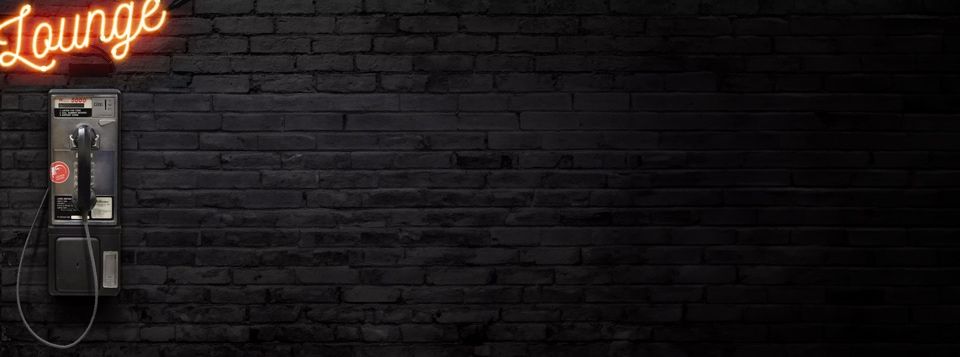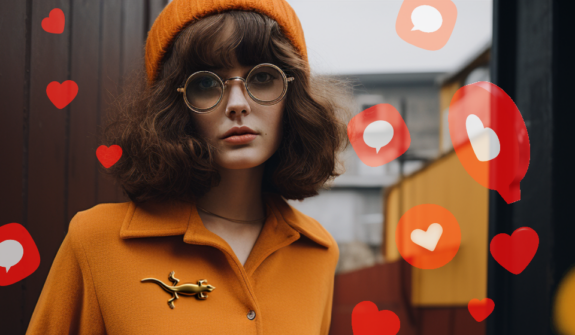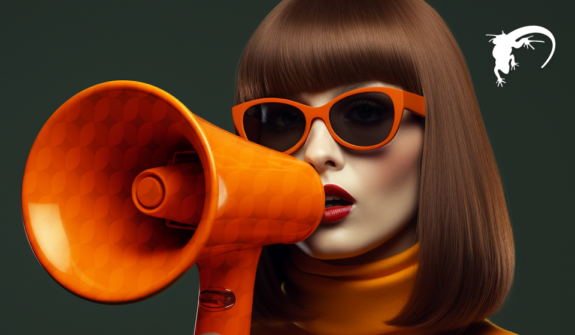Top Web Design Trends to Inspire You in 2024

In the fast-paced world of web design, trends are ever-evolving, shaping the digital landscape and influencing how users interact with online content. As we step into 2024, it’s paramount for web designers and enthusiasts to keep a pulse on the industry’s latest innovations. Our Lounge Lizard Brandtender’s aim with this article was to shed light on the most influential and innovative web design trends. Read below to learn about the most influential web design trends in 2024!
Innovative Web Design Trends: Crafting Digital Masterpieces
- Minimalist Design: Less is More
Minimalism continues to be a powerhouse in the web design realm. Taking away unnecessary elements and focusing on simplicity enhances user experience and communicates a sense of sophistication.
- Dynamic Color Palettes: Painting Digital Experiences
Color plays a pivotal role in influencing user emotions and perceptions. In 2024, designers are experimenting with bold combinations to evoke specific moods and enhance brand identities. Enhancing your brand identity can often lead to brand loyalty and increased conversions.
- Innovative Design Elements: Beyond the Ordinary
From unconventional navigation menus to engaging animations, designers can incorporate unique and unexpected elements to captivate audiences. Engaging animations breathe life into static pages, serving as powerful storytelling tools. From subtle micro-interactions to immersive animated backgrounds, these dynamic elements redefine the visual language of the web. Scroll-triggered animations respond to user journeys, adding an interactive layer to the browsing experience.
- Design Inspiration: Fueling Creative Expression
Creativity knows no bounds, and designers often draw inspiration from diverse sources. With its intricate patterns and harmonious colors, nature becomes a muse for organic and visually pleasing designs. In its myriad forms, art injects a sense of aesthetics and emotion into digital landscapes, inspiring unique layouts and creative compositions.
- Cultural influences
Designers are drawing upon rich traditions and symbolism to influence websites’ authenticity and relatability. This dynamic interplay of inspiration fosters innovative web design concepts that resonate with users profoundly. By exploring these diverse avenues—from the organic beauty of the natural world to the expressive realms of art and the depth of cultural heritage—designers forge a path toward digital innovation, ensuring that each website becomes a captivating reflection of the multifaceted sources that fuel the creative process.
- Graphic Design Evolution: Bridging Art and Functionality
Graphics have evolved beyond static images, paving the way for dynamic and interactive visual elements. This transformation marks a seamless integration of graphic design with other pivotal web components, orchestrating immersive digital experiences. Graphics now breathe life into websites, responding to user interactions and providing a layered, engaging narrative. Through this evolution, designers harness the power of pictures not merely as static embellishments but as dynamic storytellers, enhancing the overall user experience and contributing to the creation of captivating and interactive digital environments.
- Website Design Revolution: Redefining User Journeys
User-centric design is at the forefront of the evolving web landscape. Accessibility has become a cornerstone, with strategies tailored to accommodate diverse needs, making information universally reachable. Personalized interactions emerge as a critical element, tailoring content and features based on user preferences and behaviors, creating a more engaging and individualized online journey. This holistic approach enhances user satisfaction and fosters a deeper connection between individuals and the digital platforms they navigate, ultimately defining the next frontier in responsive and user-centric website design.
Modern Web Design Trends: Embracing Technological Advancements
- Modern Web Design Principles: Aesthetic and Functional Harmony
Modern web design epitomizes the harmonious integration of aesthetics and functionality, weaving a seamless tapestry that captivates users while ensuring practical usability. Fundamental principles governing contemporary design prioritize user-centered approaches, placing the audience’s needs and preferences at the forefront. Responsive layouts, a cornerstone of this approach, dynamically adapt to diverse devices and screen sizes, guaranteeing a consistent and optimal user experience. In this symbiotic relationship between form and function, modern web design not only delights the eye with visually appealing interfaces but also champions accessibility, usability, and a user-centric ethos to create an engaging and intuitive digital landscape.
- Material Design: Google’s Influence on User Interfaces
Derived from Google, Material Design is a design language distinguished by its emphasis on lifelike shadows, responsive animations, and fluid transitions. This methodology goes beyond aesthetics, prioritizing a tangible and cohesive user experience. By meticulously integrating realistic design elements, Material Design ensures visual continuity and intuitiveness across diverse devices. From the subtle play of shadows to the fluidity of transitions, the impact of Material Design extends beyond its origin, influencing contemporary user interfaces and setting a standard for seamless digital interactions. It remains a testament to the enduring importance of design principles prioritizing visual appeal and user-centric functionality.
- Site Design Trends: Crafting Engaging Digital Spaces
The structure and layout of a website significantly impact user engagement. The architecture of a website is a pivotal factor in shaping user engagement. From modular forms that offer versatility and adaptability to asymmetrical designs that break away from traditional constraints, the emphasis is on creating visually striking and user-friendly environments. As websites evolve, the focus extends beyond mere aesthetics to user experience, ensuring that the structure serves both form and function. By exploring innovative layout trends, designers aim to craft online spaces that captivate visitors visually and provide intuitive and satisfying digital journeys.
- UI/UX Design Integration: Elevating User Experiences
User Interface (UI) and User Experience (UX) design are inseparable elements of modern web development. UI design focuses on the visual elements, ensuring a captivating aesthetic, while UX design centers on the overall user journey, prioritizing ease of use and satisfaction. As these principles converge, web developers aim to provide seamless, user-centric experiences that transcend functionality, elevating websites into intuitive and enjoyable realms for a diverse audience.
- Motion Design Dynamics: Adding Life to Interfaces
Motion design injects vitality into static web pages, creating dynamic and engaging user experiences. Beyond mere embellishments, these dynamic elements become storytelling tools, guiding users through seamless journeys and enhancing overall engagement. From subtle transitions guiding navigation to captivating animations communicating brand identity, motion design serves as a transformative force. In the digital era, its integration breathes life into interfaces and shapes compelling narratives, fostering a deeper and more immersive connection between users and the online experience.
- Traditional vs. Interactive Web Design: Striking the Right Balance
While traditional web design principles endure, interactive design is pushing boundaries. Designers push boundaries, seamlessly integrating interactive elements to enhance user experiences without sacrificing usability. It’s a unique blend of tradition and innovation, forging a path where timeless principles coexist with cutting-edge interactivity.
Popular Website Design Trends: Navigating the Digital Landscape
- User-Centric Navigation: Enhancing Accessibility
User navigation is a cornerstone of website design. Intuitive menus take center stage, simplifying navigation, while interactive elements engage users in an immersive experience. The goal is to transcend mere functionality, creating pathways that users can effortlessly follow, enhancing accessibility for diverse audiences, and ensuring that the overall user journey is efficient and a delight, contributing to an engaging and user-friendly digital environment.
- Responsive Design Evolution: Adapting to Diverse Devices
The rise of diverse devices requires websites to be adaptable and emphasize delivering a consistent and optimized user experience, irrespective of the device. From flexible grids to media queries, responsive design techniques enable websites to respond dynamically to the user’s environment, fostering accessibility and user satisfaction. In this ever-evolving technological era, adapting becomes paramount for websites to thrive across diverse devices.
- Engaging Microinteractions: Enhancing User Delight
Microinteractions add a layer of delight to user interactions. From the gentle vibration of a smartphone upon a successful action to the animated heart icon confirming a ‘like,’ micro-interactions contribute to a more engaging and enjoyable digital interaction. The art of integrating these delightful details demonstrates how these seemingly minor elements collectively elevate the user journey, fostering a connection between users and the interface beyond mere functionality and adding a layer of joy to every interaction.
- Typography Trends: Communicating with Style
Typography goes beyond mere text; it’s a powerful design element. Exploring creative font choices, strategic spacing, and unique styling nuances, designers leverage typography to evoke emotions and reinforce brand messaging. As a powerful visual tool, the evolving trends in typography underscore its pivotal role in crafting compelling narratives and leaving a lasting imprint on digital and print mediums’ visual landscape.
Latest Web Design Trends: Riding the Wave of Innovation
- Cutting-Edge Visual Trends: Pushing Creative Boundaries
Visual elements are at the forefront of web design. Designers, at the forefront of creativity, are reshaping digital landscapes by pushing boundaries. Bold imagery and multimedia integration emerge as potent tools, captivating audiences and transcending traditional design norms. As time goes on, it becomes evident that visual trends not only define the aesthetic language of websites but also serve as influential conduits for expressing brand identity and creating immersive, visually arresting online experiences.
- Futuristic Design Elements: Anticipating Tomorrow’s Interfaces
As technology advances, so does the vision for future interfaces. AR seamlessly overlays digital information onto the real world, enhancing everyday interactions, while VR plunges users into immersive digital environments. These futuristic elements redefine user engagement, offering unparalleled levels of interactivity and immersion. As designers embrace the potential of AR and VR, the evolving landscape of interface design promises to transport users into realms where the boundaries between the physical and digital dissolve, unlocking new dimensions of digital experience.
- Sustainable Design Practices: Nurturing the Environment
Sustainability isn’t limited to physical products; it extends to digital design. Designers incorporate sustainable elements such as energy-efficient coding, optimized media, and eco-conscious color palettes. From minimizing server loads to prioritizing renewable resources, these trends exemplify a commitment to reducing the digital carbon footprint. By championing eco-friendly practices, the evolving landscape of web design contributes to a more sustainable digital environment. It encourages a collective responsibility toward fostering a harmonious balance between technology and ecological well-being.
Web Design Trends 2024: A Glimpse into the Future
The evolution of web design can be seen as a convergence of cutting-edge technologies and refined design philosophies that will redefine the digital landscape in 2024. Emerging technologies, such as augmented reality (AR), virtual reality (VR), and sustainable design practices, will play pivotal roles. Additionally, a heightened focus on user-centricity, coupled with innovative design elements like dynamic color palettes and interactive infographics, is poised to shape the user experience.
From the seamless integration of augmented reality to the prioritization of sustainability, our Brandtenders explore and provide a nuanced understanding of the anticipated trends that will influence web design. As we anticipate the digital future, this synthesis serves as a compass for designers and enthusiasts, guiding them through the exciting terrain of upcoming possibilities in web design.
In conclusion, the ever-evolving landscape of web design in 2024 is a testament to the industry’s adaptability and creative prowess. As trends evolve, it is evident that Lounge Lizard Brandtenders are at the forefront of this transformative era. The implementation of cutting-edge technologies, as highlighted in our exploration, underscores the commitment to pushing boundaries and crafting innovative digital experiences. At Lounge Lizard, we take pride in our expertise and creative flair, which contribute significantly to the evolution of web design, embracing user-centric philosophies, dynamic visuals, and sustainable practices. If you ever need help or want to learn more, don’t hesitate to contact LoungeLizard to help with all your web design needs.






